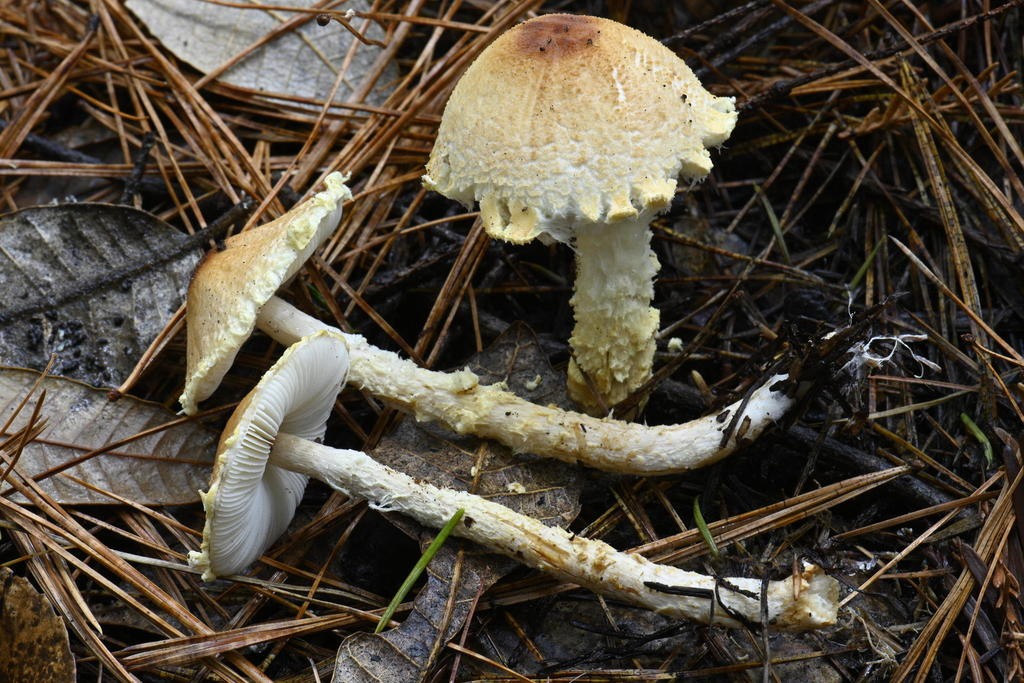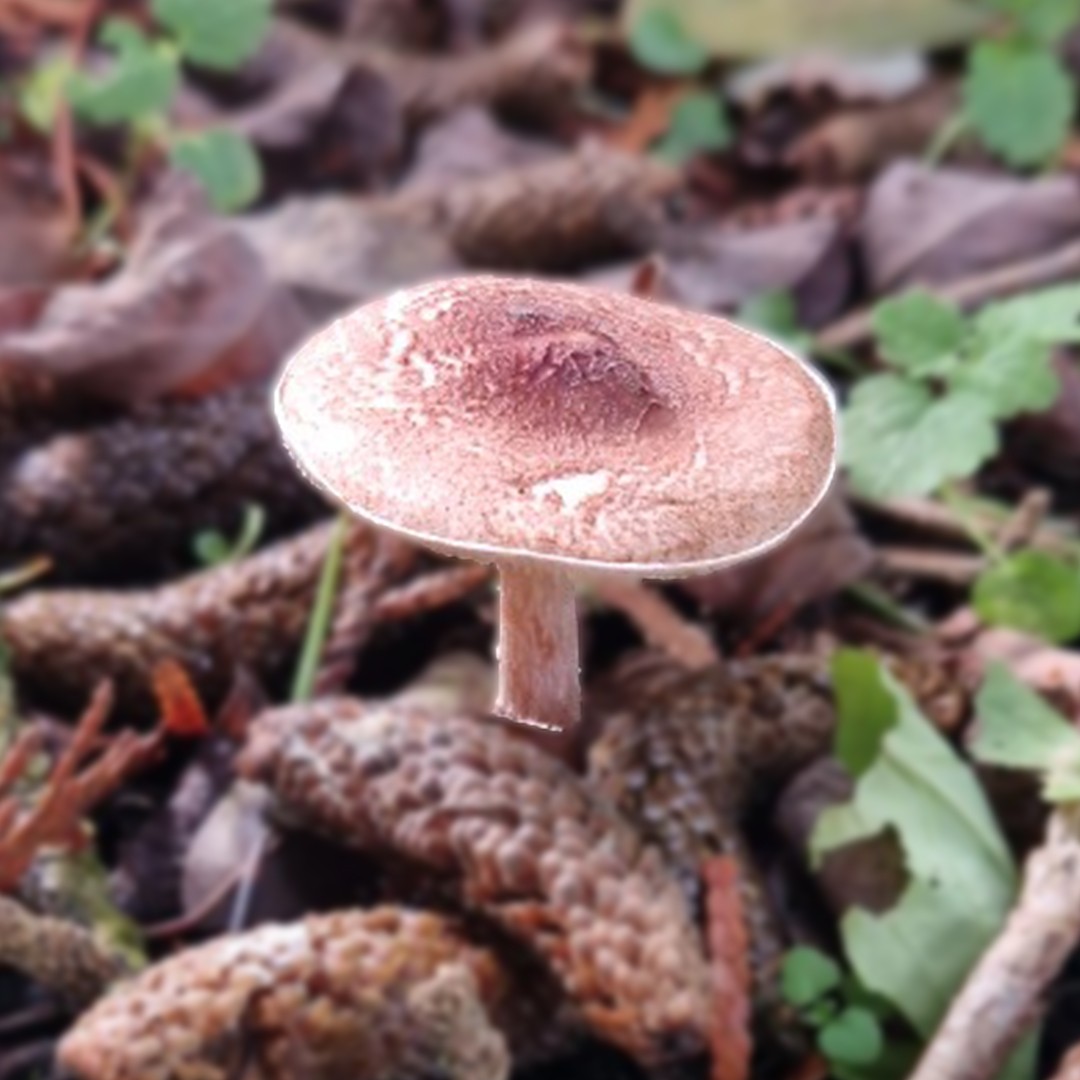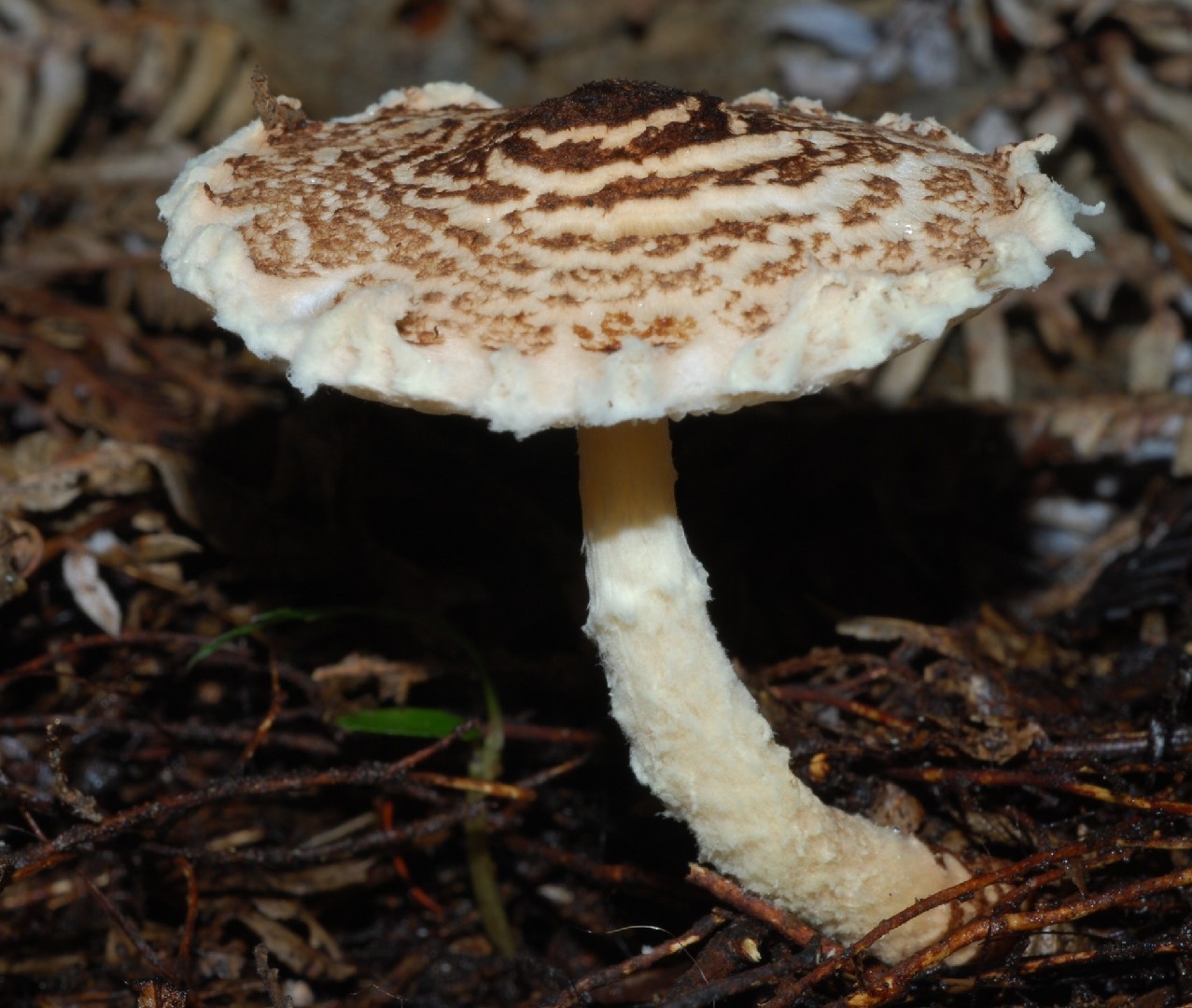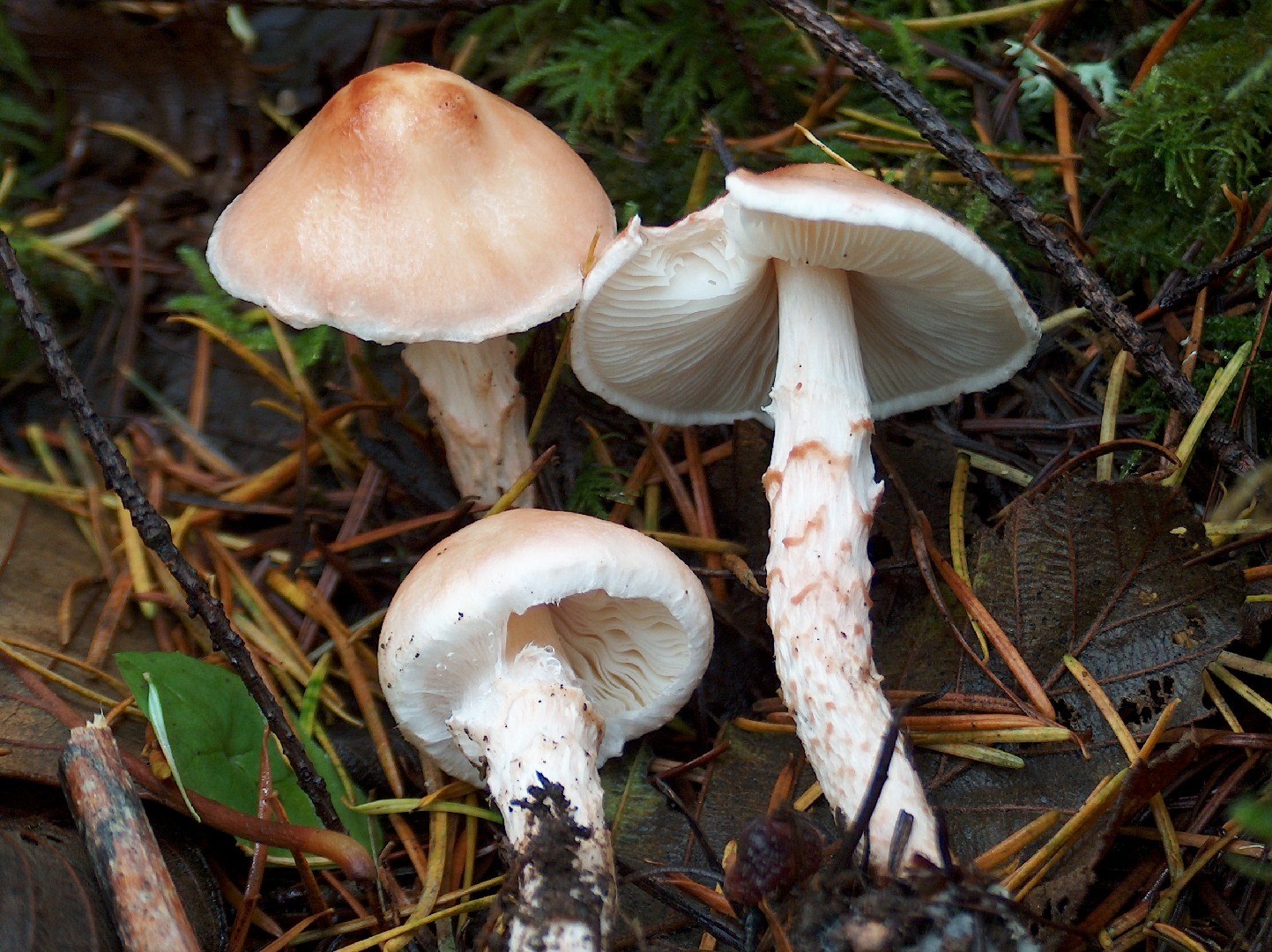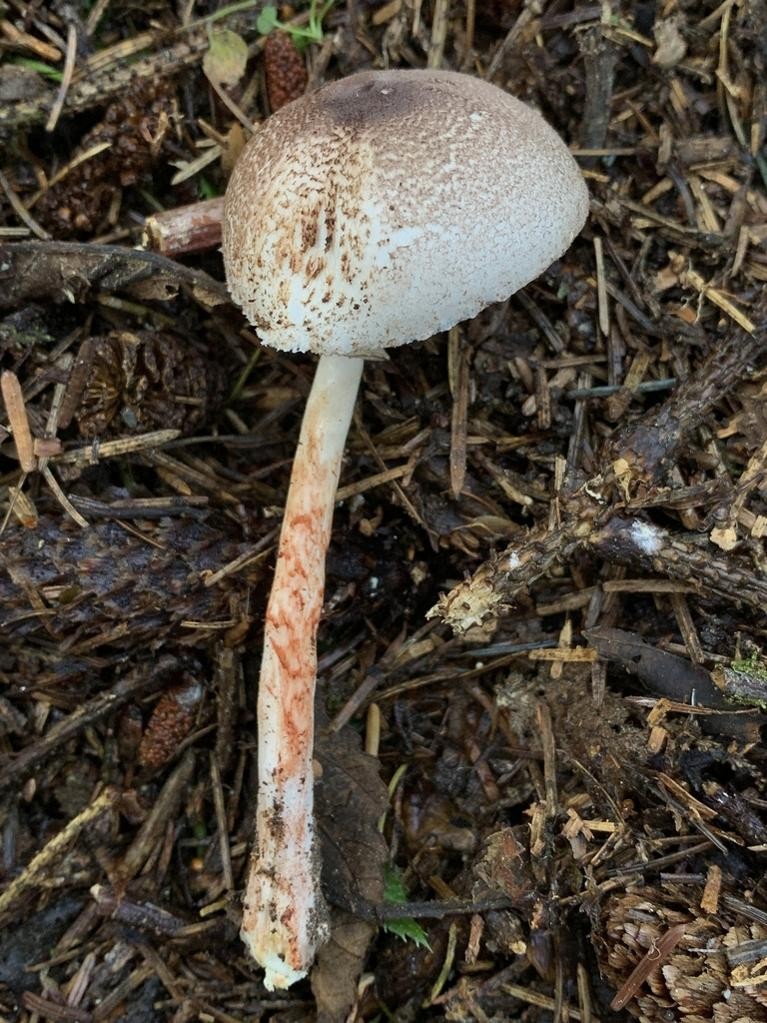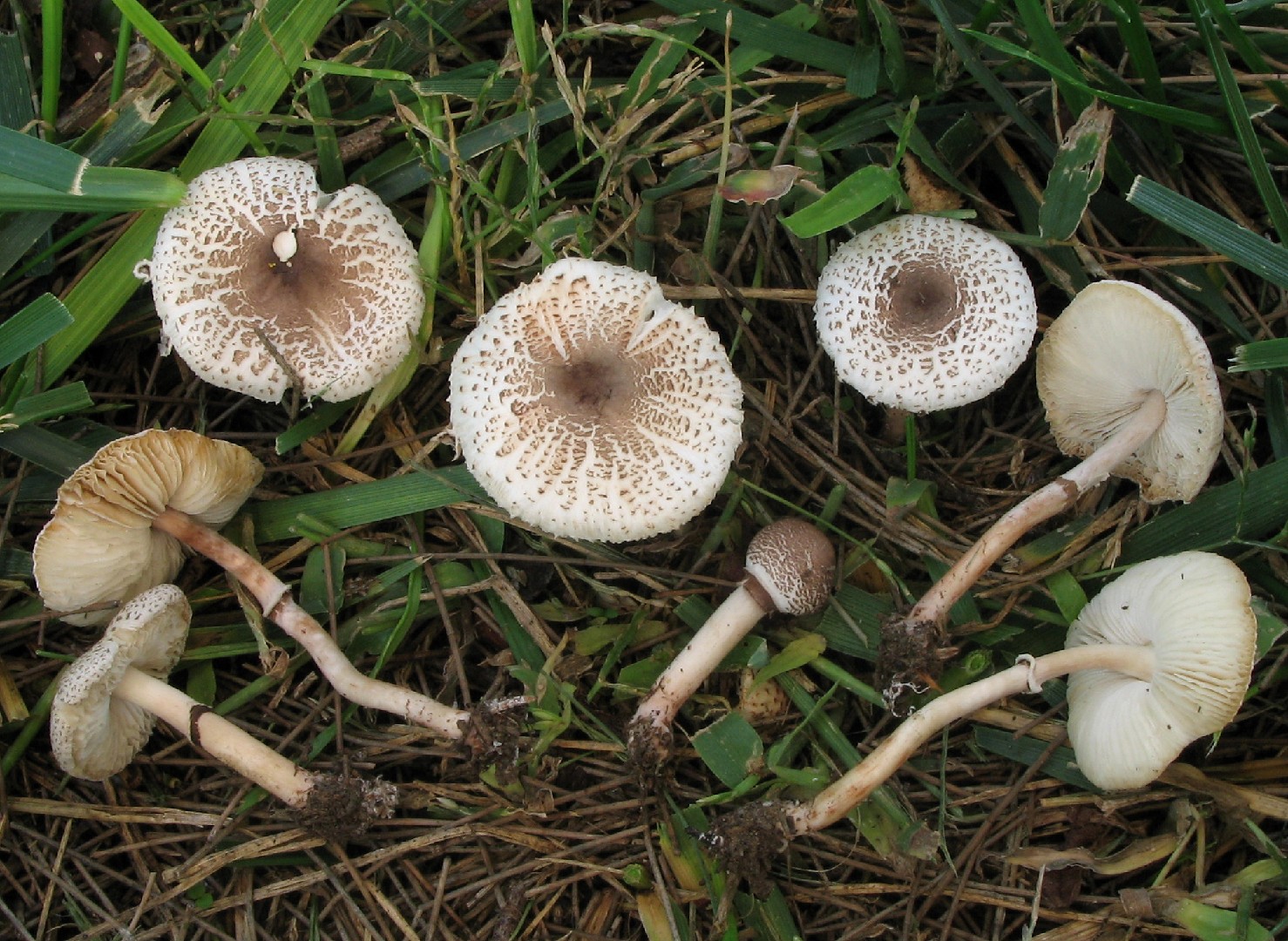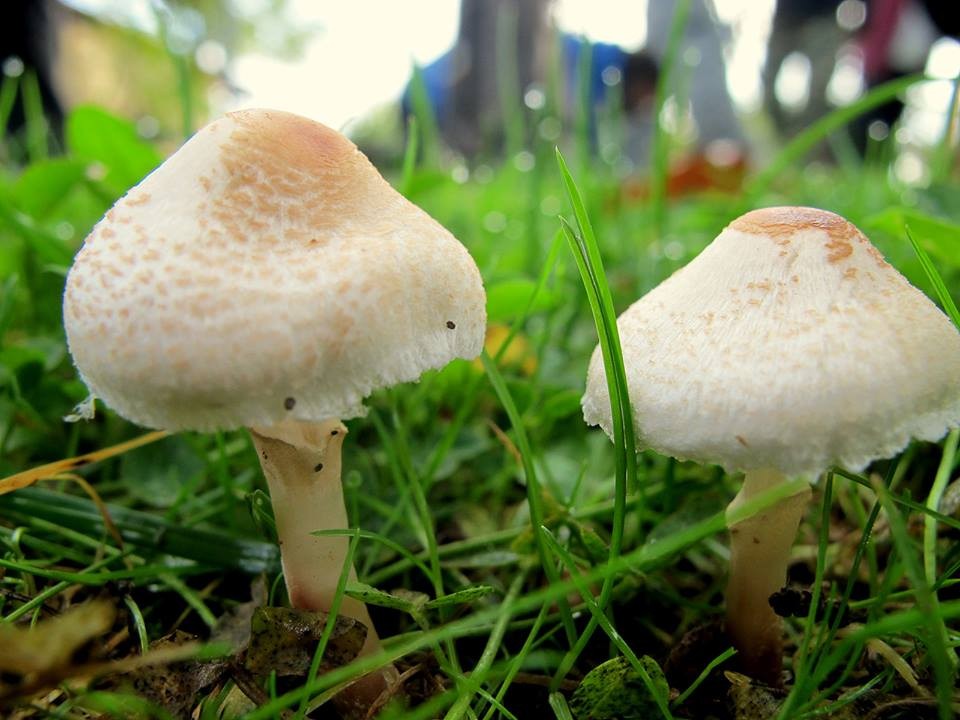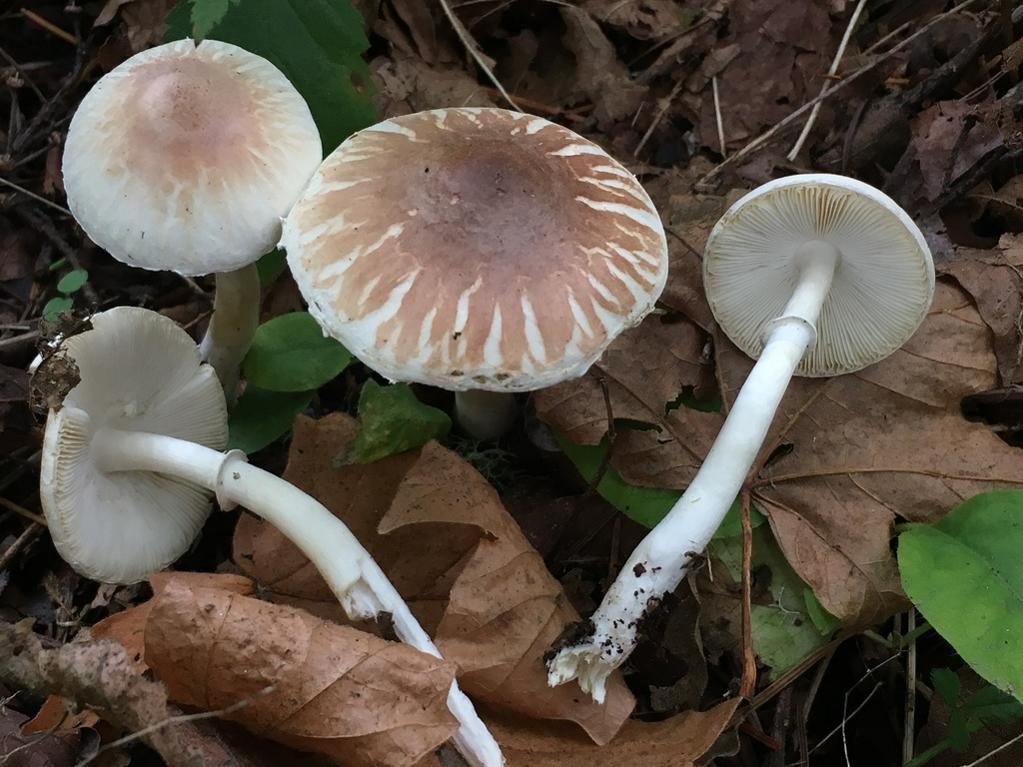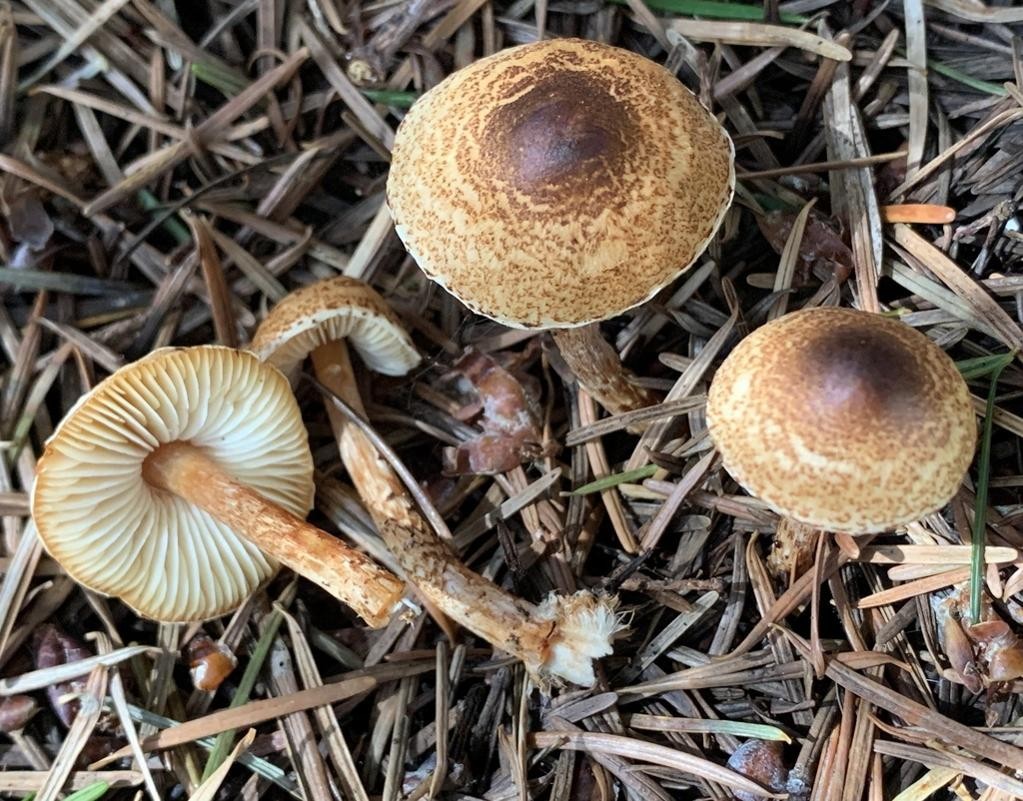Lepiota
Scientific name: Lepiota
Lepiota
Scientific name: Lepiota
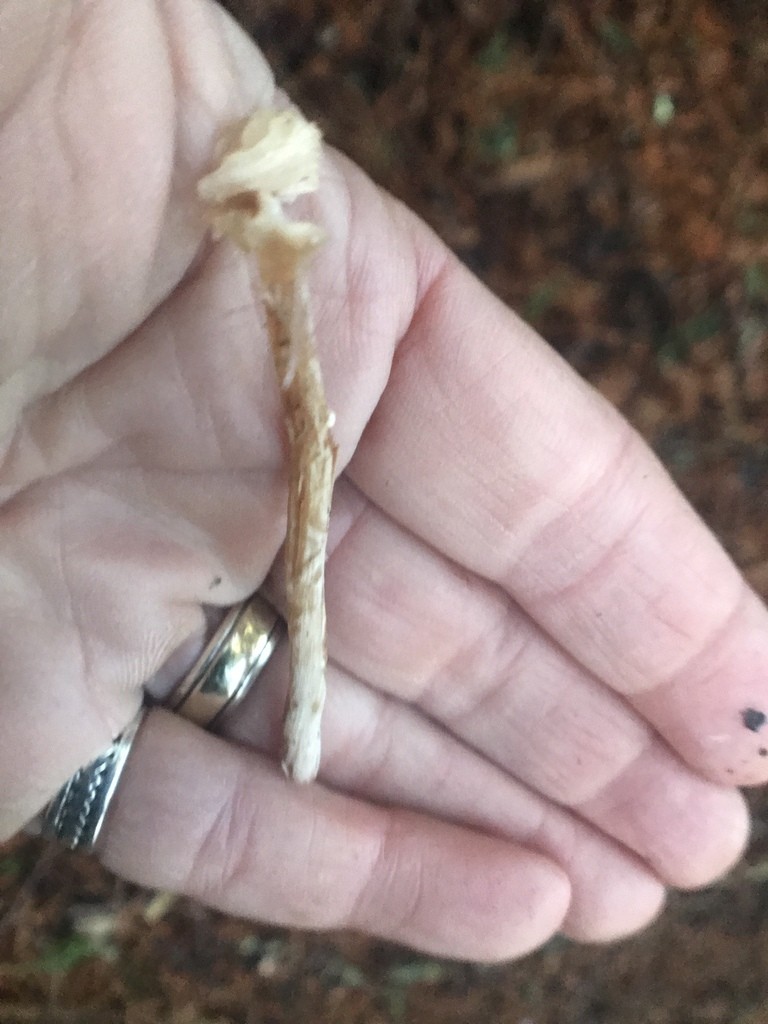 Photo By Jennifer Rycenga , used under CC-BY-4.0 /Cropped and compressed from original
Photo By Jennifer Rycenga , used under CC-BY-4.0 /Cropped and compressed from original Description
Lepiota is a fascinating group known for its diversity of small, often delicate mushrooms with scaly caps. These fungi typically have a white spore print and exhibit a cap that can range from bell-shaped to more flattened as they mature. Many species within this group are found in woodland areas and can often be identified by their distinctive, ringed stalks. They contribute essential roles in ecosystems, particularly in the decomposition of organic matter.
